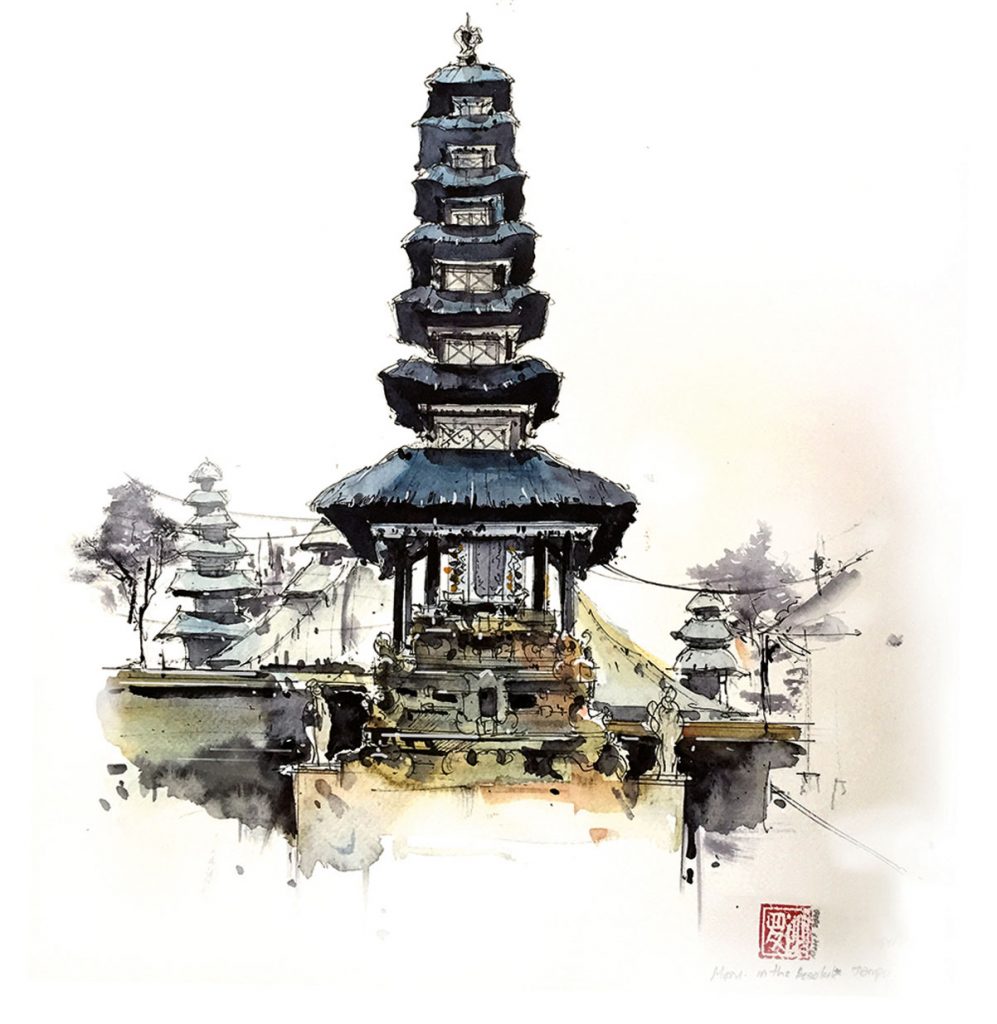When you travel around Bali and witness the many temples scattered on the island, you will notice some very distinct architectural features. When it comes to the larger temples, the most impressive feature you will see are the meru, the multi-tiered shrines that tower high-above the rest.

The term ‘meru’ is a reference to Mt. Mahameru, the sacred mountain of Hindu (and Buddhist) cosmology. It is fabled to be found at the ‘centre of the world’; its summit, at a million kilometres high, is where heaven is located, the abode of the gods. With its religious importance, Mt. Mahameru has been symbolically represented through architecture, such as the prang in Khmer temples of Cambodia and Thailand, or the Balinese meru towers.
The meru towers, or pelinggih meru, are easily recognised with their pagoda-style, multi-tiered roofs that diminish in size as they ascend. The tiers, known as tumpang, are nearly always oddly-numbered, going from one to as high as eleven levels – except for one meru found at Taman Ayun Temple, which features two levels.
You will find these meru in the jero of a temple, the innermost sanctum reserved for the most sacral activities. As pelinggih, or shrines, they are therefore ‘seats’ for gods and spirits, who will temporarily reside within them. Being symbolic of the great holy mountain, the height of the meru thus shows the importance of the residing god or spirit; the higher up the mountain, the holier the ‘resident’.
The eleven-tiered merus are often reserved for the highest of the Hindu gods – Shiva, Brahma and Wisnu – such as that found at Pura Ulun Danu Beratan, whose towering meru is dedicated to Shiva and Paravathi, goddess of fertility and love. The five-tiered merus are dedicated to Bhatara Mahajaya, god of Mount Agung; the three-tiered meru of Pura Luhur Uluwatu is dedicated to Dan Hyang Nirartha, a legendary Hindu priest. Many smaller merus will be dedicated to local gods or deified ancestors.
The roofs of a meru are constructed with the black fibres of the sugar palm tree known as ijuk, and the whole structure is carefully constructed according to the philosophies of traditional Balinese architecture, Asta Kosala Kosali.
The most impressive meru towers on the island can be found at Pura Besakih, Bali’s mother temple at Mount Agung; Pura Taman Ayun in Mengwi; and Pura Kehen in Bangli.







